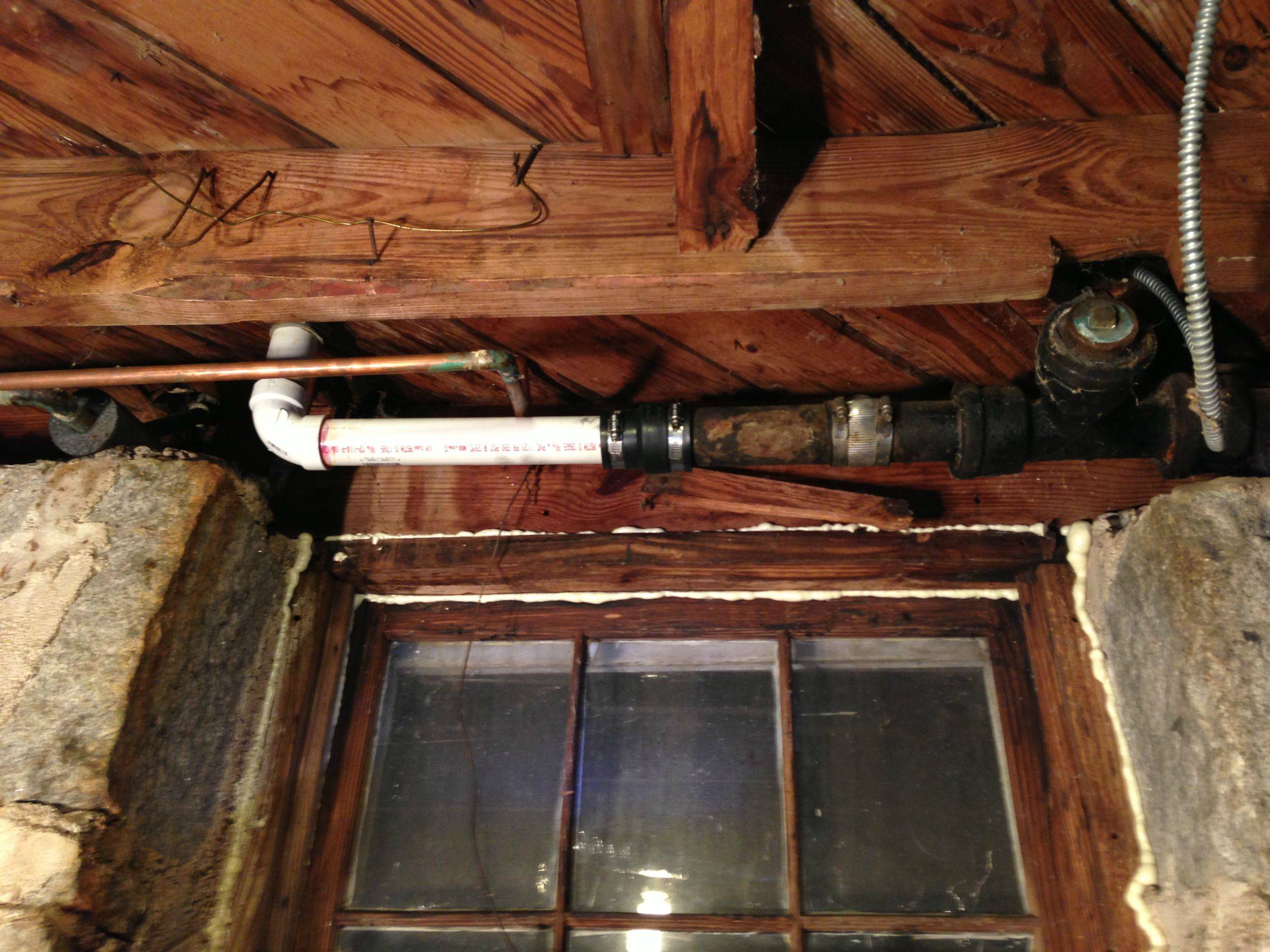My kitchen sink drains through an S-trap immediately below the sink to another trap (a P? a U?) in the basement below. The drain pipe then runs along the wall till it meets the main drain pipe shortly before it leaves the house.
Because this second trap is cast iron, I can't see any way to remove it and take it out. The sink has been draining poorly, and snaking the line seems to help for a bit, but I can't but think there's some real build-up in this trap.
I am also concerned because I have never seen any such double-trap arrangement elsewhere.
The trap in question:
For images of the whole assembly, see this Imgur album.
After: I used this as an excuse to get a sawzall and used it with a carbide-tipped cast-iron cutting blade to saw through the cast iron pipe to the right of where it flared to join with the trap.
I removed the Fernco coupler that tied the PVC under the sink to the cast iron? lead? drain pipe that ran to the trap and pulled the whole assembly out. It turned out they'd run the smaller O.D. threaded 1-1/2" PVC down well inside the metal pipe; the PVC actually ended slightly in the basement.
I replaced the trap assembly with two lengths of Schedule 40 PVC and a 90-degree PVC elbow. A new 1-1/2" to 2" Fernco coupler joined the PVC to the existing cast iron drain pipe. I reused the old Fernco coupler to join the smaller sink PVC to the larger PVC I purchased; the smaller pipe is slightly inserted in the larger, but an inch rather than a foot. (They were both labeled 1-1/2" PVC. Go figure.)
The end result is a sink that drains fabulously and no leaks, and a sawzall I get to keep, for much less than it would have cost to hire a plumber just to snake the line, nevermind replacing the trap with an elbow. Yay DIY!


